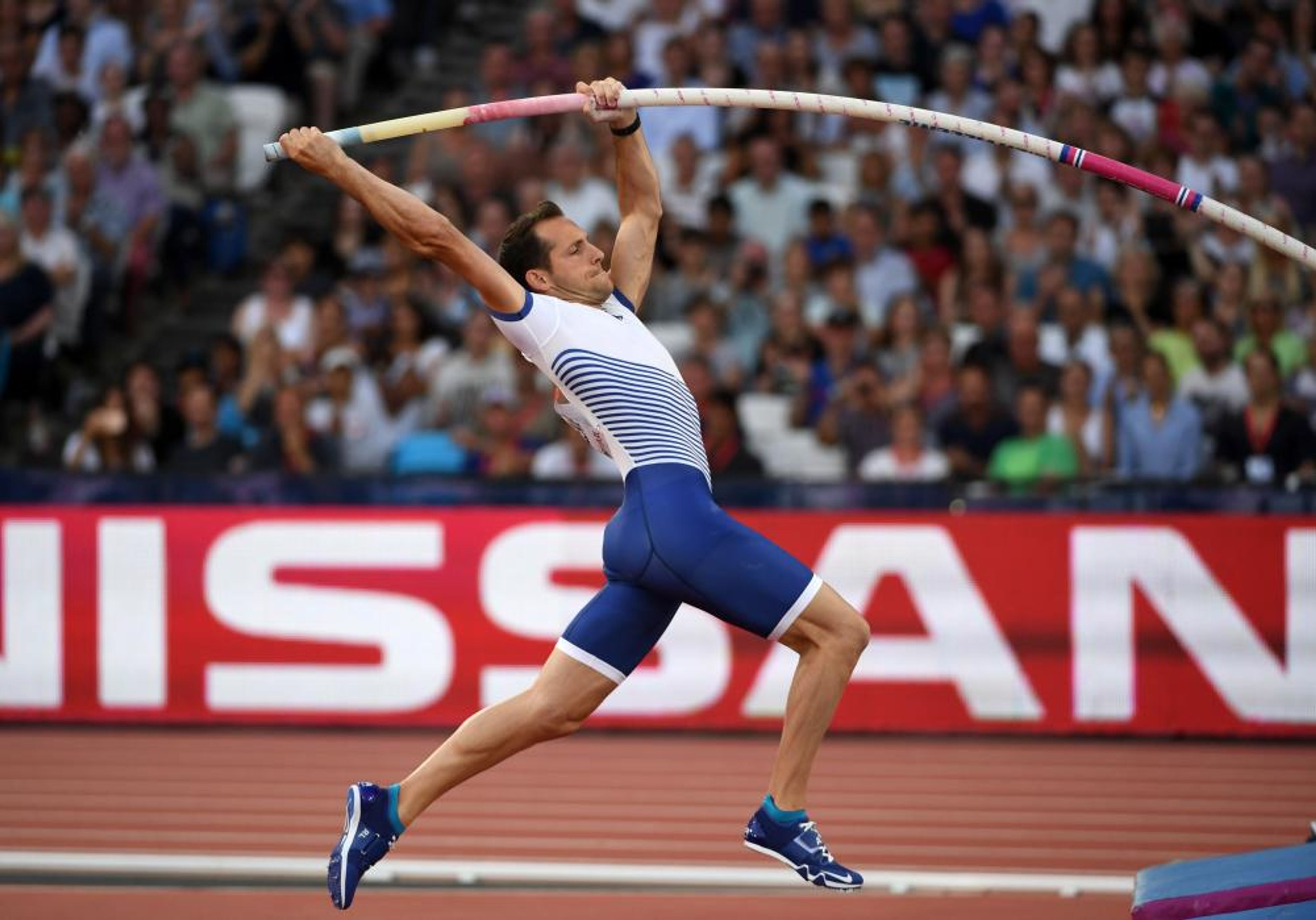Pole Vault Mastery: Vitaly Petrov's Definitive Guide to Technique and Evolution
Discover the evolution of pole vaulting through Vitaly Petrov's comprehensive guide, "Pole Vault – The State of the Art." Learn the intricacies of technique from one of the sport's most influential coaches.
Book Report: Pole Vault – The State of the Art by Vitaly Petrov
Introduction
Pole vaulting, a sport that blends raw athletic power with precise technical execution, has undergone dramatic changes over the decades, most notably with the introduction of the flexible fiberglass pole. Vitaly Petrov’s Pole Vault – The State of the Art serves as an in-depth manual for understanding the sport’s evolution, techniques, and biomechanical foundations. Petrov, a world-renowned coach who has guided the likes of Sergey Bubka and Giuseppe Gibilisco, provides readers with a meticulous breakdown of pole vaulting phases, enriched with data-driven insights that highlight the sport's complexities.
The Historical Context and Evolution of the Pole Vault
The approval of the flexible fiberglass pole by the IAAF in 1961 marked a pivotal moment in pole vaulting history. This innovation allowed vaulters to achieve unprecedented heights, catapulting the men’s world record from 4.80 meters—achievable with metal poles—to a staggering 6.15 meters. Petrov’s narrative emphasizes the profound impact that this change had on the sport, not just in terms of records, but in how the event was approached, coached, and executed.
Over the subsequent decades, extensive data and practical experience have been collected, refining our understanding of the optimal techniques for pole vaulting. Petrov’s book compiles this knowledge, offering a framework that blends biomechanical principles with the nuances of individual athlete performance.
Pole Grip and Carry: The Foundation of Technique
Petrov begins his technical analysis with the grip and carry of the pole, underscoring their critical role in setting up a successful vault. According to Petrov, the ideal width of the grip, typically between 60cm and 70cm, depends on the vaulter’s physical attributes such as height, arm length, and joint mobility. Petrov provides detailed data on how variations in grip width affect performance:
- Narrow Grip: Leads to excessive tension in the arm and shoulder muscles, causing a forward shift in the center of mass, which decreases the smoothness of the pole's lowering process. This grip can also complicate the planting technique, leading to a shorter forward movement of the shoulders after penetration, which in turn reduces the loading of the pole with the right hand and delays the turnover.
- Wide Grip: This grip shifts the center of mass forward too early in the approach, potentially blocking the shoulders' movement and complicating the planting process. A lower grip by the left hand can further delay penetration and hinder the turn.
Petrov’s work with Sergey Bubka involved multiple adjustments to his grip width before they found the optimal setting in 1991, illustrating the importance of fine-tuning even seemingly minor aspects of technique.
The Approach: Speed, Rhythm, and Technical Precision
The approach phase is perhaps the most crucial part of the pole vault, where speed, rhythm, and technical precision converge. Petrov provides detailed data on the optimal approach characteristics, noting that today’s top vaulters typically use an approach length of 42 to 46 meters, covering 18 to 20 strides. This distance allows for the gradual build-up of speed, which is essential for a controlled and powerful take-off.
Petrov’s analysis includes data on the correlation between approach speed and vault performance:
- Top Vaulters’ Speed: The average horizontal velocity of top male vaulters in the last five meters of the approach is around 9.8 to 10.0 m/s, with a grip height of 5.15 to 5.20 meters. This velocity correlates with jumps ranging from 6.15 to 6.25 meters.
- Gender Comparisons: Petrov compares the approach speeds of top male and female vaulters, noting that women generally achieve lower speeds (around 8.6 m/s) and correspondingly lower heights, but the technical principles remain the same.
Petrov further dissects the approach into its beginning and middle phases, emphasizing the importance of achieving a unified vaulter-pole system. The beginning phase, typically covering four to six strides, is where the athlete establishes the rhythm and direction of the run. Petrov provides specific angles for pole carry during this phase, recommending that the pole be held at 65° to 75° to the horizon, gradually lowering to 50° to 60° by the end of the approach.
In the middle phase, which spans eight to ten strides, the athlete should reach 90-95% of their maximum running velocity. Petrov’s data reveals that the pole is typically carried at an angle of 45° to 60° during this phase, and the athlete’s focus should be on maintaining stride length while slightly increasing stride frequency as they approach the take-off.
The Pole Drop and Plant: A Critical Transition
Petrov identifies the pole drop and plant as the critical phase where the energy generated during the approach is transferred into the vault. He provides specific data on the stride patterns of elite vaulters during this phase:
- Stride Frequency: In the final strides leading up to the plant, stride frequency increases while stride length remains constant. Petrov notes that the world’s top vaulters typically cover the last 17 to 17.5 meters in six strides.
- Pole Drop: The pole drop begins five to six strides before the plant, with the right hand initiating the movement. Petrov emphasizes that the left hand must remain at chest level, providing stability and direction for the pole throughout the drop.
The final two strides are crucial, as they set up the take-off. Petrov’s data shows that the pole should be slightly elevated (10cm to 15cm above the center of mass) at this point to maintain balance and control. He also stresses the importance of abdominal tension during these strides, which helps prevent the vaulter from squatting or losing momentum as they transition to the take-off.
Take-off and Penetration: Maximizing Energy Transfer
The take-off and penetration phase is where the vaulter converts the kinetic energy from the approach into vertical lift. Petrov provides detailed data on the optimal take-off characteristics, emphasizing the need for precise timing and technique:
- Take-off Distance: The take-off point for top vaulters typically falls between 4.20m and 4.40m from the back of the box, with taller vaulters generally taking off closer to 4.10m and shorter vaulters at around 4.30m to 4.40m.
- Velocity Data: Petrov presents data from Sergey Bubka’s best vaults, where his velocity continued to increase through the final strides: 9.5m/sec four strides before take-off, 9.7m/sec two strides before take-off, and 9.9m/sec immediately prior to take-off.
Petrov emphasizes that the left arm should not try to bend the pole, but rather plant it firmly towards the box and then transfer the effort to the right hand. This allows the pole to bend naturally from the impact of the vaulter’s speed and mass, setting up the conditions for a powerful swing-up.
Swing-up and Rock-back: Harnessing the Pole’s Potential
The swing-up and rock-back phases are where the vaulter capitalizes on the energy stored in the bent pole. Petrov provides specific data on the optimal swing-up technique:
- Swing Timing: The swing should begin immediately after the take-off, with the shoulders drawing back through the effort of the shoulder girdle muscles. Petrov notes that the rotation axis shifts from the hands to the shoulders during this phase, allowing the vaulter to execute a powerful upward swing.
- Pole Bend: The pole reaches its maximum bend when the vaulter’s body is horizontal to the ground, with the shins of the bent legs passing by the pole and rising to the level of the head and shoulders.
Petrov also discusses the importance of the shoulder arrest after deep penetration, which ensures that the hips drive upward towards the pole. The left arm plays a critical role in this phase, actively unbending to accelerate the upward drive of the hips.
The I Position and Turn: Achieving Maximum Verticality
In the I Position, the vaulter’s body aligns vertically with the pole, creating a powerful upward thrust. Petrov provides data on the uncoiling speed of the pole and the vaulter’s body during this phase:
- Uncoiling Speed: The pole’s highest speed of uncoiling coincides with the vaulter’s unbending motion, generating an accelerated vertical ascent. Petrov notes that Sergey Bubka achieved vertical speeds of up to 6 m/s during this phase.
- Turn Mechanics: The turn should be executed as a continuous movement, with the legs moving upward and the shoulders dropping down. This simultaneous action ensures that the vaulter maintains the speed and momentum necessary for a successful bar clearance.
Petrov emphasizes that the turn and bar clearance must be performed without delay, with the vaulter using the take-off speed to maintain close contact with the pole throughout the turn. The closer the vaulter’s and the pole’s lines are during the pull-up and turn, the longer the acceleration upwards, maximizing the height achieved.
Turn and Bar Clearance: The Final Challenge
The final phase of the vault, the turn, and bar clearance, is where all the preceding elements come together. Petrov’s data-driven approach provides insights into the critical aspects of this phase:
- Pole Rotation: Petrov notes that the rotation of the pole in the bearing point is used to maintain the uniform motion of the body during the turn. The vaulter’s arms keep the body close to the pole, ensuring that the speed generated during the take-off and swing is not lost.
- Bar Clearance: The bar clearance should be executed in a “curved ascension,” a technique where the vaulter bends the knees to increase rotational speed. Petrov’s analysis reveals that while not all top vaul
ters have standardized motions during bar clearance, they share an excellent “feeling of the bar,” which allows them to avoid touching it and ensure a clean vault.
Conclusion: The Art and Science of Pole Vaulting
Vitaly Petrov’s Pole Vault – The State of the Art is more than just a technical manual; it is a deep dive into the intricate blend of art and science that defines pole vaulting. Petrov’s detailed analysis, backed by extensive data, provides a comprehensive guide to understanding the sport’s nuances. From the initial grip on the pole to the final clearance of the bar, every phase of the vault is dissected and explained with precision, offering valuable insights for athletes and coaches alike.
As pole vaulting continues to evolve, driven by advancements in technology, training methodologies, and data analysis, Petrov’s observations will remain a cornerstone of the discipline. His work serves not only as a blueprint for achieving success in pole vaulting but also as a testament to the sport’s rich history and future potential.








